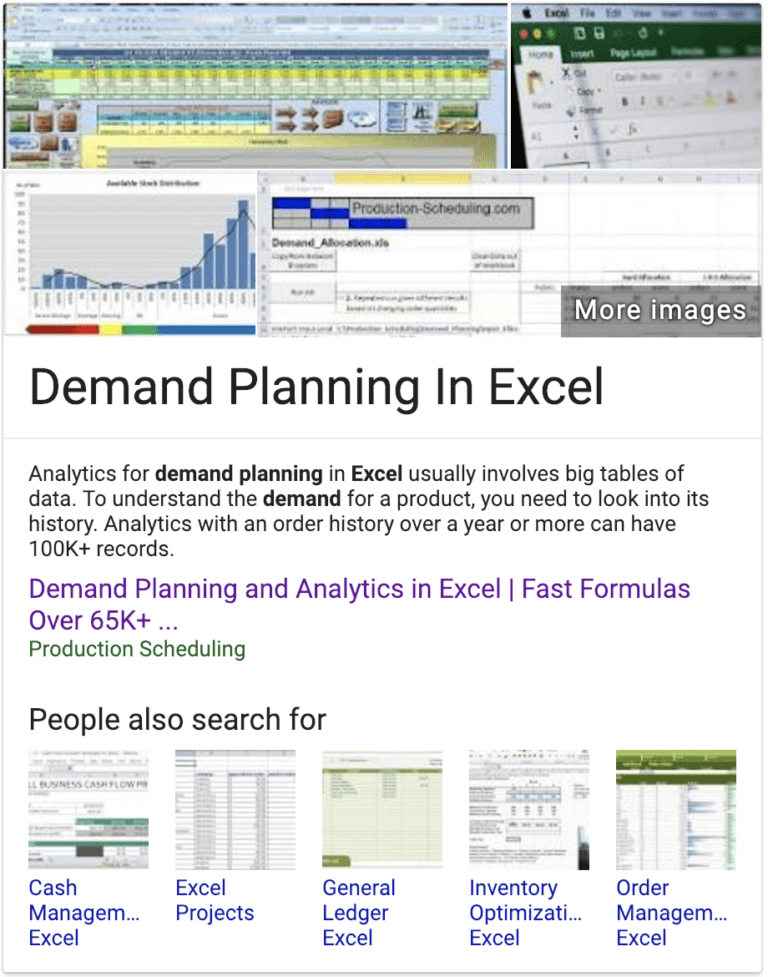Guest opinion: There is no last mile in supply chain
A supply chain visionary pushes readers to recognize all demand is causal. It's critical to get the right data and translate it for demand forecasting.
Keep readingGiven how important demand planning is, you’d think consumer goods manufacturers are using really advanced tools for it, right? Especially in consumer electronics, where many companies are based in Silicon Valley and pushing the boundaries of technology in their own products.
Late last year, Kristin Markworth, one of Alloy’s strategic advisors, set out to help us research this hypothesis, and the result was surprising, if not unexpected. Kristin is a 20+ year veteran in consumer electronics. She was most recently VP of Sales and Sales Operations at GoPro, where she went on her own journey implementing planning processes and tools. To answer this question, she met with demand planners at a half-dozen consumer electronics companies, from Fortune 100 brands to digital-native upstarts, and heard a consistent story at each.
The most popular planning software? Microsoft Excel.
And, no one was happy with the tool they were using. Those who relied on Excel were frustrated with the time involved. Those with other tools did not like them and had either abandoned them altogether or worked primarily outside the tool to analyze the business — often by exporting data to Excel.
Several common reasons came up as to why Excel remains the most used software.
Some teams or individuals have a hard time trusting a tool to produce more accurate forecasts than what they can create in Excel. They look at the tool as a “black box” that takes away the planner’s ability to see the nuances in the data that impact the bigger picture. Because the methodologies used to produce the forecast for planning are unclear, it becomes a challenge for them to explain or determine what happened when actuals inevitably do not match plans.
Without this visibility, teams also find it difficult to do scenario analysis. They need to make decisions like whether to change price or cancel a promo, but can only do so if solid scenarios are available. The lack of transparency into the factors behind a forecast thus limit its usefulness.
Other teams might want a purpose-built forecasting or planning tool, but simply cannot afford it or justify the expense. Budget is a common reason why companies opt for Excel. A robust planning solution itself can be pricey, but add on the on-boarding and data integration consultants, and you have a whole other level of cost and burden on the company’s resources.
Quantifying the ROI of a tool is often difficult and time consuming, making it challenging for teams to justify the expense to management.
Say a company wants a tool and has the budget. It should be smooth sailing, right?
Consumer goods brands vary greatly with regard to several key factors, including which function owns demand forecasting and planning, where the necessary data lives and how it’s siloed, what processes are followed (which within a company are constantly morphing or changing), what terminology and KPIs are used and how they’re defined, and of course, how demand changes. All these differences create a lot of frustration for the team trying to implement any new tool. While software may be based on best-in-class workflows, it likely still doesn’t match exactly what the company is currently doing. Without proper change management, users will resist changes to existing processes and adoption of the tool will be limited.
Finally, even if the initial implementation goes well, other issues that arise as a company grows or changes can lead them to abandon a tool.
Most demand planners we’ve spoken to want a more accurate forecast and would love a tool to help them. But only if it offers good value, allows them to do ad-hoc analysis and scenario analysis, the methodologies used are transparent and it is simple enough that they don’t need several days of training and a super user to leverage it effectively.
We also believe it’s important for a tool to provide a reasonable ROI, taking into account the Total Cost of Ownership. Those touting unrealistic levels of forecast improvement do themselves and the planners a disservice. Decision-makers need real examples of how the tool pays for itself in terms of value drivers like inventory savings, additional sales opportunities and reduced loads on existing headcount, not just bold claims of how “black box” artificial intelligence will lead to major leaps in forecast accuracy.
A supply chain visionary pushes readers to recognize all demand is causal. It's critical to get the right data and translate it for demand forecasting.
Keep readingTo correctly account for historical out-of-stocks (OOS) in demand forecasting, examine the cause, product and location of each out-of-stock event.
Keep readingDefining demand sensing, how it differs from planning and 4 reasons for building out demand sensing in conjunction with your demand planning capabilities
Keep reading
